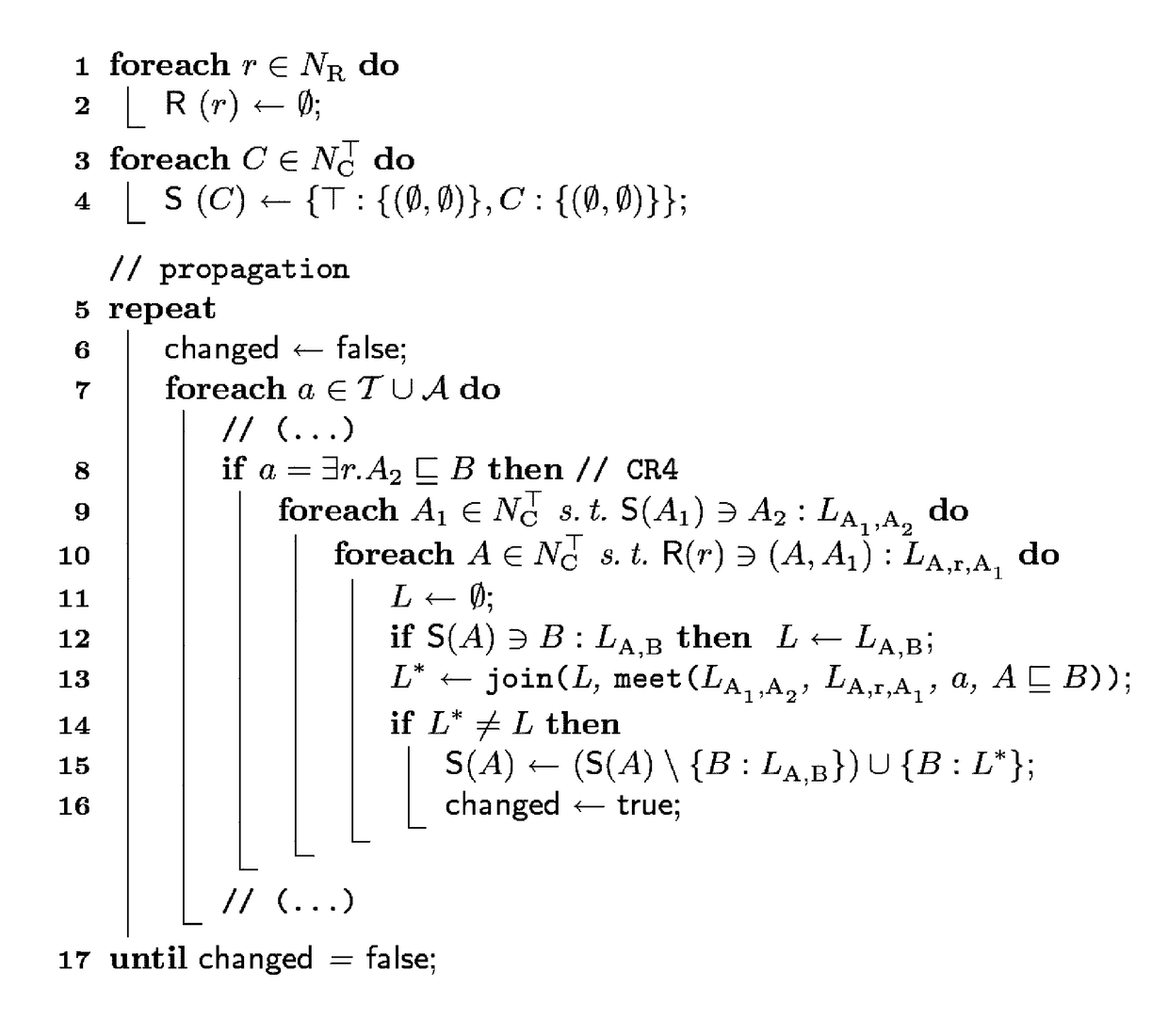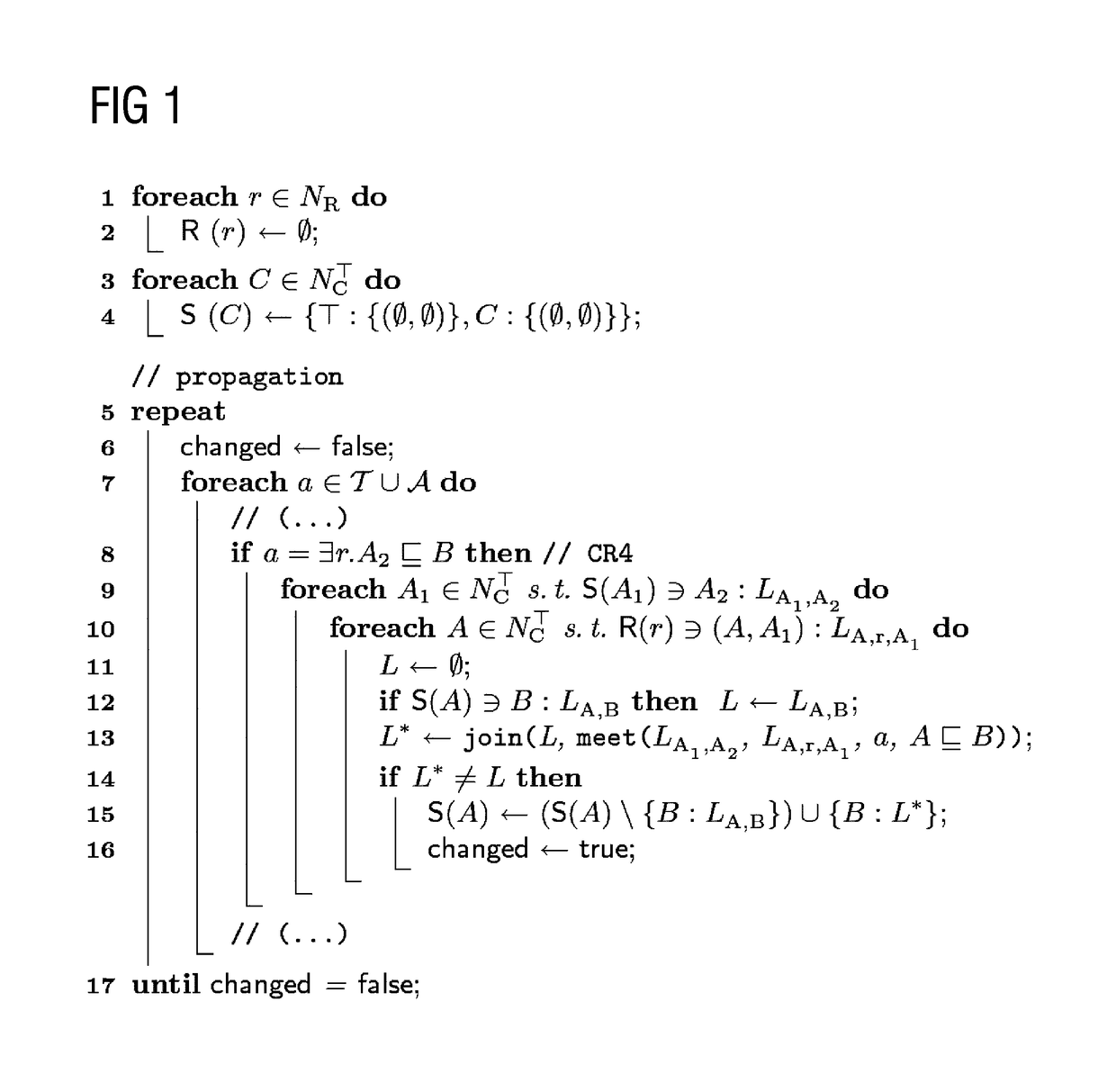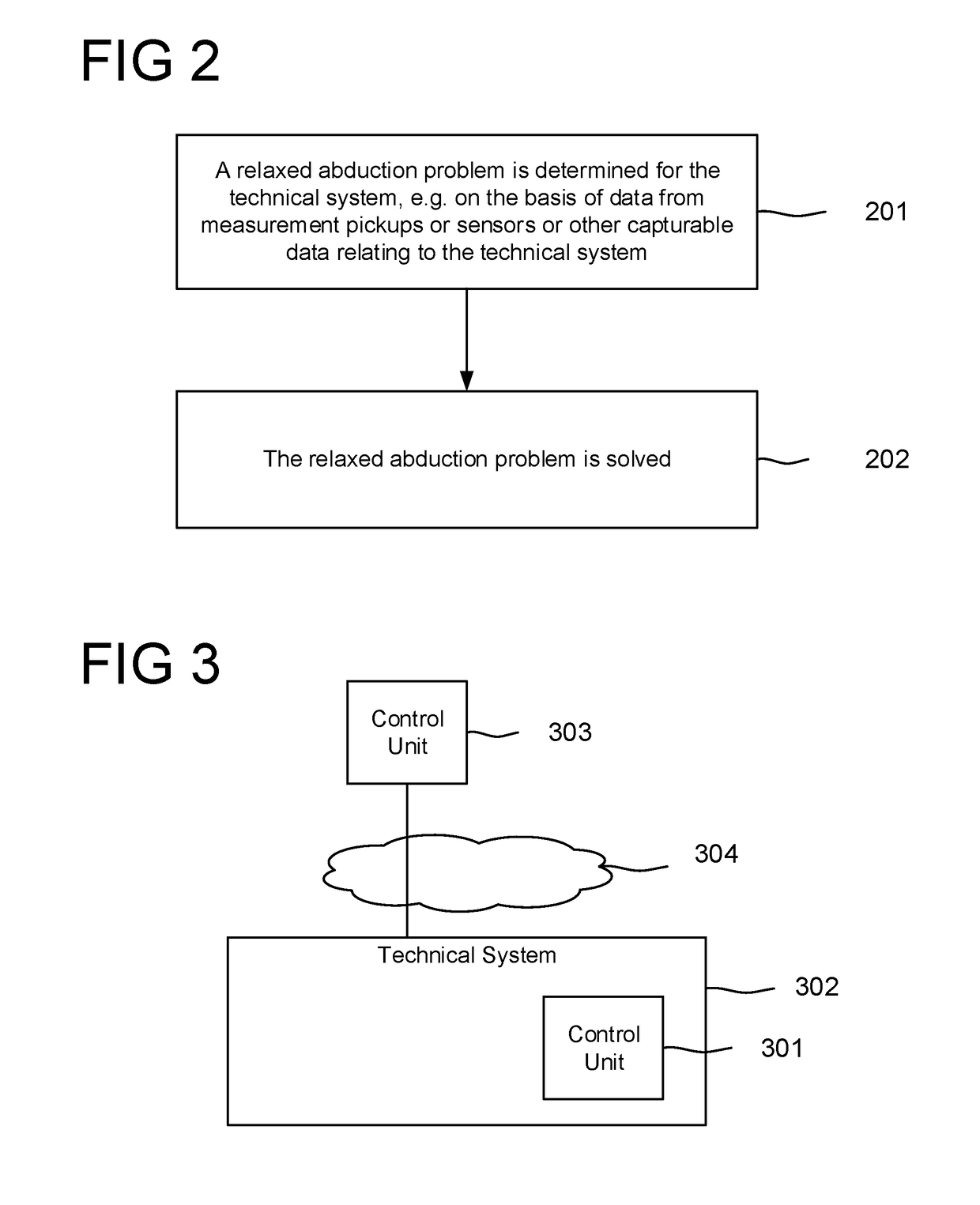Control of a machine using relaxed abduction method
a relaxed abduction and control method technology, applied in adaptive control, testing/monitoring control systems, instruments, etc., can solve problems such as the inability to explain observations with given models, the inability to effectively analyze data by an operating person, and the inability to achieve the effect of abduction-based information interpretation
- Summary
- Abstract
- Description
- Claims
- Application Information
AI Technical Summary
Benefits of technology
Problems solved by technology
Method used
Image
Examples
Embodiment Construction
[0069]The solution proposed here comprises particularly the following:
[0070](1) The definition of the logic-based abduction is formally relaxed so as to obtain important properties of defined problems (such as the verifiability of statements about correctness and existence of solutions, etc).
[0071]In particular, a relaxed abduction problem (see below: definition 3) is determined. On the basis of two orders of preference over sets of observations or assumptions, “optimal” pairs (also referred to as tuples) (A,O) (with A⊂A, O⊂O) are now intended to be determined, so that the theory T together with the set of assumptions A⊂A explains the observations O⊂O, formally: T∪A|=O.
[0072]This formalizes the intuitive approach of explaining the largest possible portion of the observations seen with as few assumptions as possible; in this case, optimality corresponds to pareto-optimality for the two orders of preference (since maximization of the observations and minimization of the assumptions ar...
PUM
 Login to View More
Login to View More Abstract
Description
Claims
Application Information
 Login to View More
Login to View More - R&D
- Intellectual Property
- Life Sciences
- Materials
- Tech Scout
- Unparalleled Data Quality
- Higher Quality Content
- 60% Fewer Hallucinations
Browse by: Latest US Patents, China's latest patents, Technical Efficacy Thesaurus, Application Domain, Technology Topic, Popular Technical Reports.
© 2025 PatSnap. All rights reserved.Legal|Privacy policy|Modern Slavery Act Transparency Statement|Sitemap|About US| Contact US: help@patsnap.com



